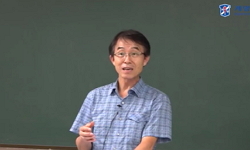Reverse engineering involves examining a system or component so as to comprehend its structure, functionality, and operation. Creation of a system model in reverse engineering can serve several purposes: test generation, change impact analysis, and th...
http://chineseinput.net/에서 pinyin(병음)방식으로 중국어를 변환할 수 있습니다.
변환된 중국어를 복사하여 사용하시면 됩니다.
- 中文 을 입력하시려면 zhongwen을 입력하시고 space를누르시면됩니다.
- 北京 을 입력하시려면 beijing을 입력하시고 space를 누르시면 됩니다.
https://www.riss.kr/link?id=A106494849
-
저자
정재천 (Department of Nuclear Power Plant Engineering, KEPCO International Nuclear Graduate School (KINGS)) ; Md. Mehedi Hasan (Department of Nuclear Power Plant Engineering, KEPCO International Nuclear Graduate School (KINGS)) ; Mohamed Elakrat (Department of Nuclear Power Plant Engineering, KEPCO International Nuclear Graduate School (KINGS)) ; Joyce Mayaka (Department of Nuclear Power Plant Engineering, KEPCO International Nuclear Graduate School (KINGS)
- 발행기관
- 학술지명
- 권호사항
-
발행연도
2019
-
작성언어
English
- 주제어
-
등재정보
KCI등재후보
-
자료형태
학술저널
-
수록면
1-8(8쪽)
-
KCI 피인용횟수
0
- DOI식별코드
- 제공처
-
0
상세조회 -
0
다운로드
부가정보
다국어 초록 (Multilingual Abstract)
Reverse engineering involves examining a system or component so as to comprehend its structure, functionality, and operation. Creation of a system model in reverse engineering can serve several purposes: test generation, change impact analysis, and the creation of a new or modified system. When attempting to reverse engineering a system, often the most readily accessible information is the system description, which does not readily lend itself to use in Model Based System Engineering (MBSE). Therefore, it is necessary to be able to transform this description into a diagram, which clearly depicts the behavior of the system as well as the interaction between components. This study demonstrates how sequence diagrams can be extracted from the systems description. Using MBSE software, the sequence diagrams for the Engineered Safety Features Component Control System (ESF-CCS) of the Nuclear Power Plant are created. Sequence diagrams are chosen because they are a means of representing the systems behavior and the interaction between components. In addition, from these diagrams, the system’s functional requirements can be elicited. These diagrams then serve as the baseline of the reverse engineering process and multiple system views are subsequently be created from them, thus speeding up the development process. In addition, the use of MBSE ensures that any additional information obtained from auxiliary sources can then be input into the system model, ensuring data consistency.
참고문헌 (Reference)
1 L. C. Briand, "Towards the Reverse Engineering of UML Sequence Diagrams for Distributed Java Software" 32 : 642-663, 2006
2 I NCOSE, "Systems Engineering Vision 2020" 2007
3 J eff A. Estefan, "Survey of Model-Based Systems Engineering(MBSE)Methodologies" INCOSE MBSE Focus Group 2007
4 KEPCO, "Safety I&C System for the APR1400"
5 R. Delamare, "Reverse engineering of UML 2.0 Sequence Diagrams from Execution Traces" 2006
6 E. J. Chukofsky, "Reverse Engineering and Design Recovery : A taxonomy" 7 : 13-17, 1990
7 KHNP, "APR 1400 Design Control Document Chapter 15"
8 C. Bennett, "A survey and evaluation of tool features for understanding reverseengineered sequence diagrams" 20 : 291-315, 2008
9 Tewfik Ziadi, "A Fully Dynamic Approach to the Reverse Engineering of UML Sequence Diagrams" 2011
10 T ewfik Ziadi, "A Fully Dynamic Approach to the Reverse Engineering of UML Sequence Diagrams" 2011
1 L. C. Briand, "Towards the Reverse Engineering of UML Sequence Diagrams for Distributed Java Software" 32 : 642-663, 2006
2 I NCOSE, "Systems Engineering Vision 2020" 2007
3 J eff A. Estefan, "Survey of Model-Based Systems Engineering(MBSE)Methodologies" INCOSE MBSE Focus Group 2007
4 KEPCO, "Safety I&C System for the APR1400"
5 R. Delamare, "Reverse engineering of UML 2.0 Sequence Diagrams from Execution Traces" 2006
6 E. J. Chukofsky, "Reverse Engineering and Design Recovery : A taxonomy" 7 : 13-17, 1990
7 KHNP, "APR 1400 Design Control Document Chapter 15"
8 C. Bennett, "A survey and evaluation of tool features for understanding reverseengineered sequence diagrams" 20 : 291-315, 2008
9 Tewfik Ziadi, "A Fully Dynamic Approach to the Reverse Engineering of UML Sequence Diagrams" 2011
10 T ewfik Ziadi, "A Fully Dynamic Approach to the Reverse Engineering of UML Sequence Diagrams" 2011
11 B. Cornelissen, "A Controlled Experiment for Program Comprehension through Trace Visualization" 2010
동일학술지(권/호) 다른 논문
-
Application of Sequence Diagrams to the Reverse Engineering Process of the ESf-ccs
- The Korean Society of Systems Engineering
- Hasan, Md. Mehedi
- 2019
- KCI등재후보
-
다목적 헬기용 DIRCM의 시뮬레이션 기반 장착위치 선정 연구
- 한국시스템엔지니어링학회
- 이명석
- 2019
- KCI등재후보
-
OMS/MP 및 유사체계 야전운용데이터를 활용한 감시체계 A의 RAM 목표값 설정 개선 방안
- 한국시스템엔지니어링학회
- 김상부
- 2019
- KCI등재후보
-
플랜트 O&M을 위한 기자재 조달방식 의사결정에 관한 연구 - 기술전략 관점을 중심으로 -
- 한국시스템엔지니어링학회
- 홍대근
- 2019
- KCI등재후보
분석정보
인용정보 인용지수 설명보기
학술지 이력
| 연월일 | 이력구분 | 이력상세 | 등재구분 |
|---|---|---|---|
| 2024 | 평가예정 | 재인증평가 신청대상 (재인증) | |
| 2021-01-01 | 평가 | 등재학술지 선정 (계속평가) |  |
| 2019-01-01 | 평가 | 등재후보학술지 선정 (신규평가) |  |





 KCI
KCI



